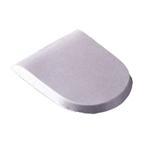Achilles tendinitis is a common foot injury for both athletes and women who wear high heels. The calf muscle (Gastroc-Soleus) blends into a thick tendon attaching to the back of the heel (calcaneus). The Achilles tendon is important for walking (gait ambulation), allowing for us to push off, (raising the heel).
Achilles tendonitis most common cause is due to overuse with a tight tendon. The athlete over does a physical activity and Achilles Tendon is over stretched. There can be because of a sudden increase of distance, intensity or amount of an activity. This can be aggravated by a tight Achilles tendon or gastroc soleus tendon, over pronation, ill fitting shoes or old worn out athletic shoes.
Another common reason for Achilles tendonitis is with constant high heel shoe use. Over time when wearing high heels, the Achilles Tendon or Gastroc Soleus muscle will shorten since the foot is in a plantar flexed position. When the same person then wears a flatter shoe or goes barefoot, the Achilles is more stressed since it is already in a shorten position.
One of the most common symptoms of Achilles Tendinitis is pain at its attachment in to the heel bone (calcaneus). This especially occurs when there is a period of inactivity such as sleeping or sitting, due to the Achilles shortening from non-use.
There are several ways to treat Achilles Tendonitis. These include rest, anti inflammatory, stretching, ice, orthotics, PT and one that should be on every one's list, heel lifts. A heel lift is a medical device placed in the shoe to raise up the heel bone (calcaneus). Heel lifts come in several different types, such as cork and rubber and different heights (3 mm, 6 mm and 9 mm shoe lifts). When a in shoe heel lift is used, it will slightly shorten the Achilles to off load the tendon during gait. If the Achilles is slightly shortened by a heel lift the effective length for propulsion is increased thus allowing for the tendon to heal faster.
Many athletes have tried using a heel lift with Achilles Tendonitis with great success. The most common height used is a 6 mm heel lift in both shoes. Heel lifts should be used in all shoes while treating Achilles tendinitis.
About Atlas Biomechanics;
Atlas Biomechanics is a woman owned sports medical manufacturer of heel lifts in the US. We produce 3 mm, 6 mm and 9 mm heel lifts, plus an adjustable heel lift with a built in heel wedge. Atlas Biomechanics manufacturers cork heel lifts, eva rubber heel lifts and adjustable heel lifts.
Teri Green
Atlas Biomechanics

No comments:
Post a Comment